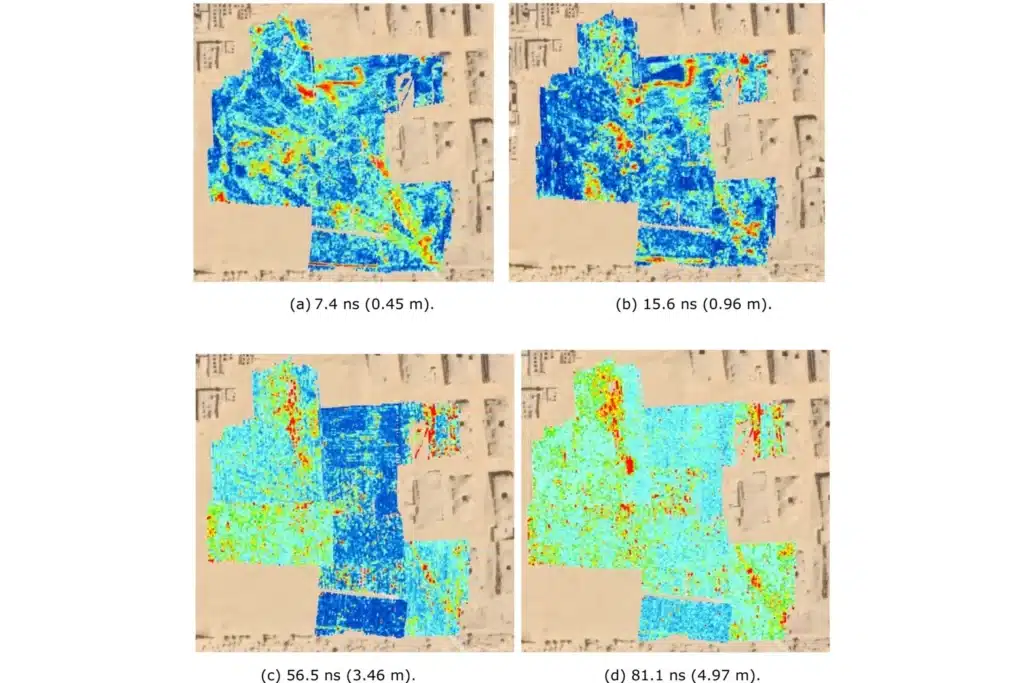Unknown structure found beneath sand near Great Pyramid of Giza in groundbreaking discovery
- A structure has been unearthed beside the Great Pyramid of Giza
- It’s been lying there undisturbed for 4,500 years
- There is a mysterious L-shaped structure with another ‘anomaly’ beneath
Published on May 15, 2024 at 11:48 AM (UTC+4)
by Amelia Jean Hershman-Jones
Last updated on May 16, 2024 at 11:10 AM (UTC+4)
Edited by
Tom Wood
A mysterious structure has been unearthed beside the Great Pyramid of Giza – and the structure has been lying there undisturbed for 4,500 years.
A mysterious L-shaped structure was buried beside the ancient monument – with another ‘anomaly’ beneath.
Archaeologists working in the area that’s a tourist favorite in Egypt found the structure without even breaking ground using new technology.
READ MORE! Dubai’s most ambitious megaproject was a futuristic pyramid designed to house 1m people
In recent times, fresh discoveries surrounding the Great Pyramid of Giza have been coming thick and fast.
They include writing on the top of the pyramids, a new discovery that uncovered how the pyramids were built, and a robot going inside to reveal a previously unseen passageway.
The position of the L-shaped structure and the other anomaly that was recently discovered suggests it could be a chamber leading to an area below.
An international team of researchers from Japan and Egypt were behind the find.
They were scanning the surface of Giza’s Western Cemetery with ground-penetrating technology when they spotted something they didn’t expect.
The Great Pyramid was actually the tomb of King Khufu with royal family members, nobles, and high-ranking officials buried nearby.
These people were usually laid to rest in ‘mastabas’, which were aboveground tombs with flat roofs.

One area in the center of the cemetery was surrounded by these mastabas, which seemed inexplicably empty.
Researchers investigated further between 2021 and 2023 and recorded their findings in Archaeological Prospection.
They used a technique called electrical resistivity tomography (ERT), which sends electrical currents into the ground to measure resistance and underlying features.
This was combined with ground-penetrating radar (GPR), which sends radar into the ground and uses the bounce-back to map below the ground.
The first anomaly was found two meters (6.5 ft) beneath the surface: an L-shaped structure measuring at least 10 meters (33 feet).
It ‘seems to have been filled with sand’, suggesting it was blocked off.
The deeper anomaly was ‘highly resistive’ – potentially a mix of sand and gravel, or simply an air void.
The researchers made a guess as to what it could have been but want to investigate further.

“The structure causing the anomalies could be vertical walls of limestone or shafts leading to a tomb structure,” they wrote in the journal.
An excavation is now underway, per Live Science.
They are confident that the structure is ‘too sharp’ to be naturally occurring.
Peter Der Manuelian, a professor of Egyptology at Harvard University, wasn’t involved in the study however he told Live Science that the structure has remained hidden because of the absence of ‘superstructures’ above ground.
He added that other L-shaped structures in Giza are usually ‘offering chapels’ but are found above ground.
“We believe that the continuity of the shallow structure and the deep large structure is important,” said the researchers of the historic find.
DISCOVER SBX CARS: The global premium car auction platform powered by Supercar Blondie

London-based Amelia cut her journalistic teeth covering all things lifestyle, wellness, and luxury in the UK capital. Fast-forward a decade and the senior content writer and editor has put pen to paper for glossy magazines, busy newsrooms, and coveted brands. When her OOO is on from writing about cars and heading up on-site SEO you can find her spending quality time with her young family, in the gym, or exploring the city she loves.




